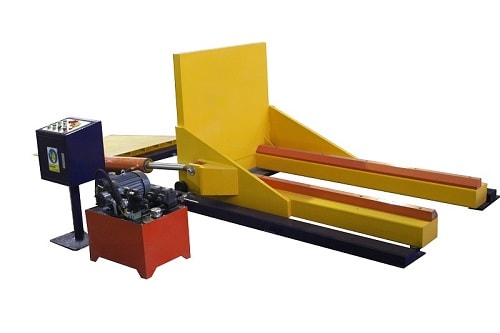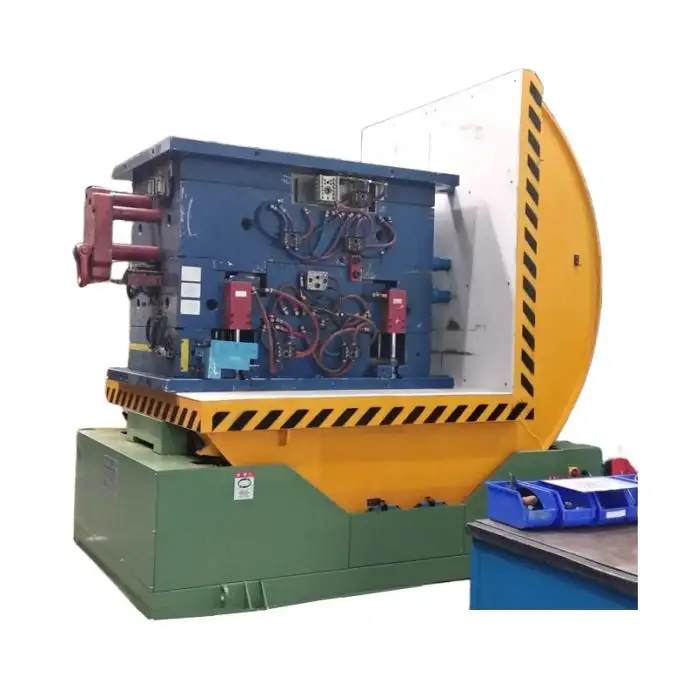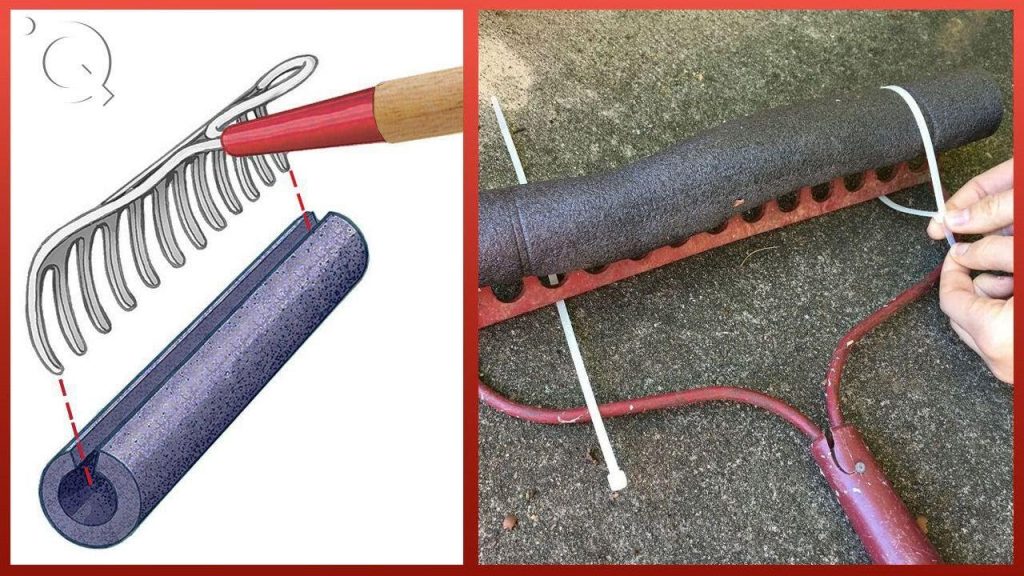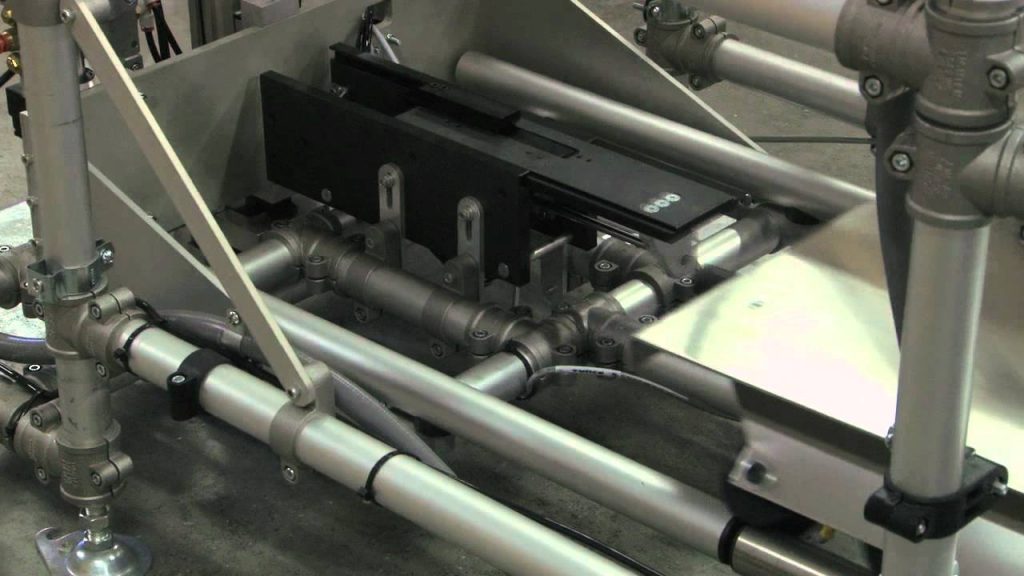Are you grappling with a steel coil packing line that underperforms, acting as a bottleneck rather than a streamlined asset? Slow speeds and inconsistent quality not only frustrate production goals but also erode profitability. It's time to transform your packing process into a high-performance engine driving efficiency and excellence.
Optimizing steel coil packing line speed while maintaining quality involves a strategic approach focusing on automation, process efficiency, parameter balancing, and robust quality control. Key strategies include ensuring machine compatibility with coil dimensions, integrating advanced technology like automation and sensors, meticulously analyzing costs versus benefits, choosing the right packing orientation, and implementing precise control systems to enhance both speed and packaging integrity simultaneously.
Unlocking the full potential of your automated coil packing line requires more than just installation; it demands ongoing optimization. This guide delves into the crucial parameters and actionable strategies needed to fine-tune your line, transforming it from a potential constraint into a significant competitive advantage by maximizing throughput without sacrificing the quality your customers expect.
Coil Dimensions and Weight Capacity: The Bedrock of Efficiency
Is your coil packing line plagued by frustrating jams, inconsistent wrapping, or constant slowdowns? The root cause might be simpler than you think: mismatched machinery struggling with your coil specifications. Ignoring the fundamental compatibility of coil dimensions and weight capacity is setting your line up for failure and inefficiency.
Optimizing steel coil packing line efficiency fundamentally starts with ensuring the machinery is perfectly matched to the specific coil dimensions (diameter, width, thickness) and weight capacities it handles. Selecting equipment explicitly compatible with your coil range is paramount. This involves a detailed analysis of your coil specifications – minimums, maximums, and averages for both size and weight. Choosing correctly designed equipment prevents operational bottlenecks caused by undersized or oversized handling capabilities, significantly reduces downtime from jams or equipment strain, and maintains consistent, high-speed operation. Crucially, this compatibility ensures that increased speed doesn't compromise the integrity and quality of the final packaging, safeguarding your product during transit and meeting customer expectations. Therefore, a thorough assessment and precise matching are non-negotiable first steps for achieving peak line performance and efficiency.
Fine-Tuning Coil Compatibility for Uninterrupted Flow
Selecting a coil packing line isn't merely about ticking boxes on a spec sheet; it's about engineering a harmonious system where coils and machinery operate in perfect sync. Achieving optimal efficiency requires a deep dive into coil compatibility, moving beyond basic checks to a comprehensive analysis. This involves understanding precisely how dimensional mismatches create operational friction and how leveraging data can smooth the path to seamless, high-speed packing.
The Bottleneck Effect of Dimensional Mismatches
Imagine forcing a square peg into a round hole – the resulting friction and inefficiency mirror what happens when coil dimensions clash with machine capabilities. This fundamental mismatch doesn't just slow things down; it creates a cascade of problems impacting speed, quality, and operational uptime:
- Reduced Speed: Coils exceeding the machine's designed size capacity force slower feeding, necessitate frequent manual adjustments, and drag down the overall line speed. Conversely, coils significantly smaller than the machine's optimal range can lead to instability on conveyors or mandrels, requiring repositioning and careful handling, which also impedes throughput. The line simply cannot run at its potential velocity.
- Compromised Quality: Incorrect dimensions are a primary cause of poor packaging. Wraps might be too loose, offering inadequate protection, or too tight in some areas and loose in others, leading to uneven tension. Straps might be misplaced or insufficiently tensioned. This increases the risk of coil damage (e.g., edge damage, telescoping) during subsequent handling, storage, and transportation, ultimately affecting customer satisfaction and potentially leading to costly claims.
- Increased Downtime: The physical strain of handling coils outside the design parameters inevitably leads to more frequent machine jams, component wear, and outright breakdowns. Sensors may misread positions, wrappers can snag, and lifting mechanisms can become overloaded. Each instance of downtime halts production, necessitates maintenance intervention, incurs repair costs, and disrupts carefully planned delivery schedules.
Data-Driven Dimension Analysis: Measure, Analyze, and Optimize
To preempt these costly issues, a meticulous, data-driven approach to dimension analysis is non-negotiable. Replace assumptions with accurate measurements and thorough analysis of your entire coil inventory:
- Coil Size Range Audit: Don't rely on nominal figures. Conduct a comprehensive audit documenting the actual full range of coil Outer Diameters (OD), Inner Diameters (ID), widths, and potentially thicknesses you process. Critically, include not just current product lines but also any projected future products or anticipated shifts in customer requirements.
- Weight Distribution Analysis: Accurately determine the weight distribution across your coil range. Document the minimum, average, and absolute maximum weights. Analyze if weight varies significantly based on material grade or specific dimensions. This data is indispensable for selecting machines with adequate, safe lifting, conveying, and manipulating capacities.
- Material Variability Assessment: Consider the different types and grades of steel (or other metals) you handle. Different materials possess varying densities (affecting weight for a given size) and surface sensitivities (some may be more prone to scratching or require gentler handling). Factor these material-specific requirements into your compatibility assessment.
Matching Machine Specifications to Coil Data: A Structured Approach
With comprehensive coil data in hand, the next step is a systematic comparison against the detailed specifications of potential or existing packing line equipment. Employing a structured format, such as a comparison table, ensures that no critical compatibility factor is overlooked:
| Factor | Impact on Efficiency & Quality | Dimension/Weight Metric to Analyze | Machine Specification to Match | Consequence of Mismatch |
|---|---|---|---|---|
| Coil Outer Diameter | Affects wrapping speed, stability during rotation, material usage | Maximum and Minimum OD | Machine OD Handling Range | Jams, slow wrapping cycles, uneven tension, coil edge damage |
| Coil Inner Diameter | Mandrel compatibility, loading/unloading efficiency, stability on mandrel | Standard and Variable ID ranges | Machine Mandrel ID Range & Type | Difficult/slow loading/unloading, coil slippage, damage to ID |
| Coil Width | Wrapping material coverage, package stability, conveyor fit | Maximum and Minimum Width | Machine Max/Min Width Capacity | Inefficient wrapping, loose/unstable packs, conveyor issues |
| Coil Weight | Lifting capacity, conveyor load, structural integrity, handling safety | Maximum Coil Weight, Average Coil Weight | Machine Max Weight Capacity (per station) | Overload, equipment strain, safety hazards, slow handling |
| Material Density | Affects actual weight for size, handling dynamics, machine stress | Density Range of Processed Materials | Machine Material Compatibility/Rating | Under/over-estimation of capacity, potential equipment damage |
| Coil Surface Condition | Potential for damage during handling/wrapping | Sensitivity to scratches, oiliness levels | Handling surfaces, Tension control | Surface defects, slippage during wrapping |
By diligently analyzing your specific coil characteristics and rigorously matching them against machine capabilities using a structured approach, you establish the essential foundation for maximizing packing line efficiency. This upfront investment in compatibility analysis prevents costly operational headaches and ensures your line can achieve and sustain peak performance and quality.
Technology Integration: Automating for Peak Performance
Are outdated manual processes acting as an anchor, dragging down the speed and efficiency of your coil packing line? In today's hyper-competitive manufacturing world, velocity is vital, and manual packing methods are increasingly becoming performance bottlenecks. Imagine a seamlessly automated line orchestrating every step with precision, boosting speed while ensuring consistent quality.
Integrating advanced technology is crucial for achieving significant efficiency gains in steel coil packing lines without sacrificing quality. Automation minimizes manual handling, ensures consistent packaging application, drastically reduces errors, and dramatically increases throughput. This leads to a more efficient, reliable, and safer operation, transforming the packing process into a competitive advantage.
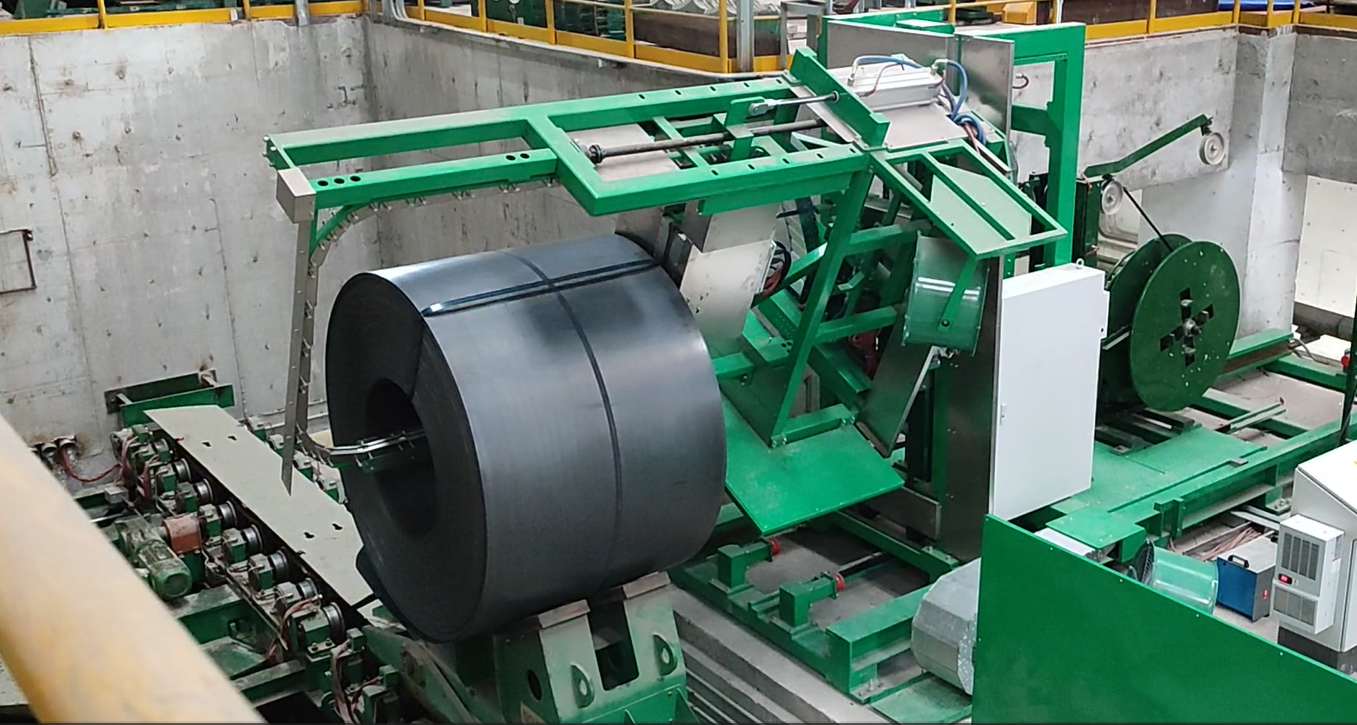
Harnessing Technology for Next-Level Packing Efficiency
Technology integration in coil packing transcends merely substituting machines for human labor; it involves a fundamental redesign of the workflow to leverage the unique capabilities of automated systems. When implemented strategically, technology fosters a synergistic environment where efficiency and quality become mutually reinforcing, rather than conflicting, goals. Exploring the core technological advancements reveals how they drive this transformation.
The Power of Automated Systems: A Detailed Breakdown
Automation delivers a multi-faceted impact on coil packing operations, yielding benefits far beyond simple speed increases. It introduces a level of precision, consistency, and operational robustness that manual methods struggle to replicate:
- Increased Efficiency and Throughput: Automated systems operate continuously at optimized, consistent speeds, significantly slashing cycle times per coil. This directly translates into a higher volume of coils packed per shift or hour, boosting overall production output and enabling faster response to customer orders.
- Enhanced Quality Consistency: Machines execute repetitive tasks like wrapping, strapping, and labeling with unwavering precision, cycle after cycle. This eliminates the variability inherent in manual operations, ensuring uniform package quality, consistent material application, and adherence to specifications for every coil. This consistency minimizes transit damage and improves customer perception.
- Reduced Labor Costs: By automating physically demanding, repetitive, and often hazardous tasks, businesses can significantly reduce direct labor requirements on the packing line. This leads to substantial savings in wages, benefits, and associated overheads, while allowing personnel to be redeployed to higher-value roles like quality control, maintenance, or process supervision.
- Improved Safety: Manually handling heavy, potentially sharp-edged steel coils poses significant ergonomic and safety risks. Automated handling systems – robots, conveyors, lifters – remove workers from these hazardous tasks, drastically reducing the potential for musculoskeletal injuries, cuts, and other accidents, leading to a safer work environment and lower insurance premiums.
Core Technologies Driving Automation
The engine behind modern, high-efficiency coil packing lines comprises several key interconnected technologies:
- Automated Coil Handling Systems: This includes industrial robots, specialized conveyors (e.g., V-saddle, slat conveyors), upenders/downenders, and automated guided vehicles (AGVs) designed specifically for moving heavy coils between process stations (e.g., from slitter to packing, packing to storage). They ensure precise positioning, gentle handling, and optimized flow, minimizing manual intervention and potential damage.
- Precision Wrapping Machines: These automated machines apply protective materials like stretch film, VCI paper, or plastic sheeting. Key features include programmable wrap patterns, adjustable overlap, precise tension control (often load-cell based), and automated film cutting and clamping. This ensures optimal material usage, consistent protection, and package stability.
- Automated Strapping and Banding Units: Critical for securing the coil and packaging materials, these units automatically apply, tension, seal (e.g., weld, notch), and cut steel or PET straps. Automation ensures consistent strap placement (radial or circumferential), precise tensioning crucial for load integrity during transport, and reliable sealing, eliminating common manual strapping errors.
- Integrated Control Systems (PLC & IoT): Programmable Logic Controllers (PLCs) serve as the central nervous system, orchestrating the actions of all automated components in the correct sequence. Human-Machine Interfaces (HMIs) provide operators with intuitive control and real-time visualization. Increasingly, IoT (Internet of Things) connectivity allows for remote monitoring, data acquisition (e.g., cycle times, fault codes, material consumption), predictive maintenance alerts, and integration with higher-level MES/ERP systems for data-driven decision making.
- Vision and Sensor Systems: Machine vision cameras inspect coils for surface defects, verify dimensions, read identification codes (barcodes, OCR), and guide robotic movements. Various sensors (photoelectric, proximity, ultrasonic, laser) detect coil presence/position, monitor strap/film tension, confirm process completion, and ensure safety interlocks are active, providing essential real-time feedback for process control and quality assurance.
Strategic Technology Integration: A Phased Approach
Implementing automation doesn't necessarily require a complete overhaul overnight. A pragmatic, phased approach often yields the best results, allowing for incremental investment, learning, and optimization:
- Bottleneck Identification: Conduct a thorough analysis (e.g., value stream mapping, time studies) of your existing packing process to pinpoint the slowest, most labor-intensive, or error-prone stages. These represent the highest-priority areas for initial automation efforts to achieve the quickest and most significant impact.
- Modular Automation: Consider implementing automation in distinct modules (e.g., automate strapping first, then wrapping, then handling). This modular approach breaks down the complexity, reduces upfront capital expenditure, allows teams to adapt gradually, and demonstrates ROI at each stage, building confidence for further investment.
- Data-Driven Optimization: From the outset, ensure that any new automated equipment includes robust data collection capabilities (via PLC/IoT). Use this real-time operational data (OEE, cycle times, stoppage reasons, quality metrics) to continuously monitor performance, identify emerging bottlenecks or areas for improvement, and fine-tune system parameters (e.g., speeds, tensions) for sustained peak efficiency and quality.
By strategically selecting and integrating these core technologies, potentially using a phased approach, manufacturers can systematically transform their coil packing lines into highly efficient, precise, and reliable operations. This technological leap is essential not only for meeting current demands but also for establishing a foundation for future growth and competitiveness.
Cost Implications: Investing in Efficiency for Long-Term Gains
Is the potential upfront cost of optimizing your steel coil packing line causing hesitation? While equipment upgrades represent a significant investment, viewing it solely as an expense overlooks the substantial long-term financial benefits. A truly efficient line minimizes waste, cuts labor costs, and boosts throughput, turning the initial outlay into a profitable venture.
While the initial investment in optimizing steel coil packing line efficiency may seem significant, a comprehensive cost analysis typically reveals substantial long-term savings and increased profitability. Factors like reduced direct labor costs, minimized packaging material waste, increased throughput leading to higher revenue potential, decreased downtime, and improved quality (reducing rejects/returns) collectively contribute to a rapid return on investment (ROI), positioning efficiency optimization as a strategically sound financial decision.
Unpacking the ROI of Efficiency Optimization
Evaluating the financial viability of optimizing your coil packing line requires looking beyond the initial price tag. A holistic cost-benefit analysis is essential, meticulously weighing the upfront investments against the projected stream of ongoing operational savings and revenue enhancements. This detailed examination provides the clarity needed to make a financially sound decision based on calculated Return on Investment (ROI).
Upfront Investment: Understanding the Initial Outlay
The capital required to upgrade or implement a highly efficient automated packing line involves several components. Accurately budgeting for these initial costs is the first step in the financial analysis:
- Equipment Costs: This is typically the largest component, encompassing the purchase price of new machinery such as automated wrappers, strapping machines, robotic handlers, conveyors, safety systems, and integrated control panels (PLCs/HMIs). Costs vary widely based on capacity, speed requirements, level of automation, brand reputation, and technological sophistication (e.g., inclusion of vision systems, IoT capabilities). Obtaining detailed quotes for equipment specified to meet your needs is crucial.
- Integration Costs: Seamlessly incorporating new automated equipment into an existing production environment often requires modifications. This can include changes to plant layout, existing conveyor systems, electrical infrastructure upgrades (power supply, cabling), control network integration (connecting new PLCs to existing systems), and potentially software development for communication with MES/ERP systems. These costs can be significant, especially in older facilities.
- Installation and Commissioning: Professional installation by certified technicians is vital to ensure equipment is set up correctly, safely, and functions according to specifications. Commissioning involves testing the integrated line, calibrating sensors, fine-tuning parameters, and verifying performance against agreed-upon metrics. These service costs from the equipment supplier or a third-party integrator must be included.
- Training Costs: Equipping your operational and maintenance staff with the skills to operate, troubleshoot, and maintain the new automated systems is critical for long-term success. This investment includes the cost of training programs (potentially off-site or on-site), development of new Standard Operating Procedures (SOPs), and the time allocated for personnel training.
Long-Term Savings: The Path to Profitability
The justification for the upfront investment lies in the substantial and ongoing operational savings and revenue opportunities unlocked by enhanced efficiency:
- Reduced Labor Costs: Automation significantly decreases the need for manual operators performing repetitive packing tasks. Quantify savings based on the reduction in required headcount, including wages, benefits, insurance, and associated overheads per employee reassigned or eliminated.
- Minimized Material Waste: Automated systems apply packaging materials (stretch film, straps, paper) with high precision and consistency. Calculate savings based on the reduction in material consumption per coil compared to previous manual or semi-automated methods. Optimized tension control and wrap patterns prevent over-use.
- Increased Throughput and Output: Higher line speeds and reduced cycle times directly increase the number of coils packed per shift. Estimate the potential revenue increase based on this higher output capacity, enabling fulfillment of more orders or faster lead times.
- Reduced Downtime Costs: Modern, well-maintained automated systems are generally more reliable than manual processes, reducing unscheduled downtime. Analyze historical downtime logs and quantify the cost savings associated with increased uptime (lost production value, maintenance labor, expedited shipping costs avoided). Predictive maintenance capabilities enabled by IoT can further reduce downtime.
- Improved Quality and Reduced Rejects: Consistent, high-quality packaging minimizes product damage during handling and transit. Calculate savings from reduced customer claims, fewer product returns, less rework, and lower scrap rates associated with packaging failures. Enhanced brand reputation is an additional, albeit harder to quantify, benefit.
- Energy Efficiency: Newer automated systems often incorporate energy-saving features like variable speed drives, optimized motor usage, and intelligent shutdown sequences during idle periods. Estimate potential energy cost savings by comparing the power consumption specifications of new equipment versus old, or by conducting energy audits.
Cost-Benefit Analysis: Making the Financially Sound Decision
To consolidate these factors and make an informed investment decision, conduct a formal cost-benefit analysis, projecting costs and savings over a realistic timeframe (e.g., 3-5 years). A structured table helps visualize the financial impact:
| Cost/Benefit Category | Initial Investment Costs (Example Estimate) | Annual Savings/Benefits (Example Estimate) | Calculation Metrics & Notes |
|---|---|---|---|
| Investment Costs | |||
| Equipment | $500,000 | - | Based on quotes for required automation level & capacity |
| Integration | $75,000 | - | Estimated cost for modifications, network setup |
| Installation/Commissioning | $50,000 | - | Supplier/integrator service fees |
| Training | $15,000 | - | Cost for operator & maintenance training programs |
| Total Investment | $640,000 | ||
| Annual Savings/Benefits | |||
| Labor Reduction | - | $150,000 | Savings from reducing 2 FTEs (wages, benefits) |
| Material Waste Reduction | - | $30,000 | 10% reduction in film/strap usage based on precision application |
| Increased Throughput Value | - | $100,000 | Value of 15% increased output capacity (contribution margin on additional sales) |
| Downtime Reduction | - | $40,000 | Savings from 50% reduction in downtime hours (lost production & maintenance cost) |
| Quality Improvement | - | $25,000 | Savings from reduced rejects, returns, and damage claims |
| Energy Savings | - | $5,000 | Estimated savings from energy-efficient motors/operation |
| Total Annual Savings | $350,000 | ||
| Financial Metrics | |||
| Simple Payback Period | ~1.8 Years | Total Investment / Total Annual Savings ($640k / $350k) | |
| ROI (Year 1) | ~55% | (Total Annual Savings / Total Investment) * 100% |
Note: These figures are purely illustrative. Actual values require detailed internal analysis.
By quantifying both the upfront costs and the multifaceted long-term benefits, manufacturers can calculate key financial metrics like ROI and payback period. In many cases, the compelling financial returns demonstrate that investing in packing line efficiency optimization is not just an operational necessity but a highly profitable strategic move.
Vertical vs. Horizontal Packing: Orientation for Optimal Efficiency
Are you constrained by limited floor space in your facility, or constantly battling coil stability issues during handling and transport? The fundamental choice between packing steel coils vertically (eye-to-the-sky) or horizontally (eye-to-the-wall) extends beyond mere preference; it's a critical strategic decision profoundly impacting packing line speed, package integrity, storage density, and logistical safety. Choosing incorrectly can lead to operational bottlenecks, damaged products, or inefficient space utilization – costly errors in a competitive market.
Selecting between vertical and horizontal packing for steel coils significantly impacts line efficiency, stability, storage footprint, and transport safety. Vertical packing generally maximizes floor space utilization and can potentially offer faster cycle times for specific automated systems handling lighter or narrower coils. However, horizontal packing provides inherently superior stability, crucial for heavier, wider coils and essential for safe handling and minimizing damage during long-distance or rough transport. The optimal choice requires a careful evaluation of specific operational needs, coil characteristics (size, weight, sensitivity), facility layout, handling equipment, and downstream logistical requirements.**
Orientation Optimization for Speed and Package Integrity
The decision between vertical and horizontal coil packing represents a crucial optimization point, demanding a careful balancing act between potentially competing priorities: packing speed, package stability, floor space utilization, handling equipment compatibility, and overall cost-effectiveness. There is no universally "correct" orientation; the optimal choice is context-dependent and must be tailored to the specific parameters of your operation. Let's dissect the key considerations for each orientation to guide this critical decision.
Vertical Packing: Advantages and Considerations
Storing and packing coils with the central axis vertical (eye-to-the-sky) offers specific benefits, particularly valuable in certain operational scenarios:
-
Advantages:
- Space Efficiency: This is often the primary driver for vertical packing. By utilizing vertical height, significantly more coils can be stored per square meter of floor space compared to horizontal storage. This is invaluable in facilities with limited or expensive floor area but available vertical clearance.
- Potentially Faster Handling (Specific Cases): Certain automated handling systems, like specialized vertical coil lifters or narrow aisle stacker cranes, can sometimes achieve faster pick-and-place cycles for vertically oriented coils, especially if they are relatively light or narrow. Integration with certain wrapping or strapping machines might also be streamlined.
- Easier Individual Coil Access (with appropriate systems): In high-density vertical storage systems (e.g., automated storage and retrieval systems - AS/RS), accessing specific individual coils without moving others can be more straightforward than in horizontal block stacks.
-
Considerations:
- Stability Concerns: Vertically oriented coils, especially those with a high width-to-diameter ratio or significant weight, are inherently less stable than horizontal ones. They have a higher center of gravity and smaller base, making them more susceptible to tipping or telescoping, particularly during transport vibrations or minor impacts. This necessitates careful handling and potentially more robust packaging/strapping.
- Specialized Handling Equipment: Moving and manipulating vertical coils typically requires specialized equipment like C-hooks with rotation capabilities, vertical coil tongs, or dedicated robotic grippers. Standard forklifts are generally unsuitable without specific attachments, potentially requiring additional capital investment.
- Stacking Height Limitations: Safety regulations and stability physics impose limits on how high vertical coils can be safely stacked, which might partially negate the space-saving advantage for very large volume storage needs.
- Potential for ID Damage: Handling equipment engaging the inner diameter (ID) must be carefully designed to avoid damaging the coil's inner wraps.
Horizontal Packing: Advantages and Considerations
Laying coils flat with the central axis horizontal (eye-to-the-wall) is a common and often preferred method due to its inherent stability and handling flexibility:
-
Advantages:
- Superior Stability: With a lower center of gravity and wider base, horizontally oriented coils are significantly more stable during handling, storage, and transport. This is paramount for heavy, large-diameter, or wide coils, minimizing the risk of damage and improving safety, especially over long distances or uneven surfaces (road, sea freight).
- Handling Equipment Versatility: Horizontal coils are readily handled by standard material handling equipment found in most steel facilities, including forklifts equipped with coil rams, standard C-hooks used with overhead cranes, and various conveyor systems. This often eliminates the need for specialized lifting gear.
- Preferred for Heavy/Large Coils: Due to enhanced stability and compatibility with heavy-duty standard equipment, horizontal orientation is generally the default choice for processing and handling larger and heavier steel coils.
- Easier Wrapping/Strapping Integration (Common Systems): Many standard through-eye wrapping and circumferential strapping machines are designed primarily for horizontal coil flow.
-
Considerations:
- Larger Floor Space Footprint: Storing coils horizontally requires significantly more floor space compared to vertical stacking for the same inventory volume. This can be a major constraint in space-limited facilities.
- Potentially Slower Handling (Manual/Semi-Auto): Depending on the layout and equipment, maneuvering horizontal coils onto packing stations or into storage might involve more steps compared to some streamlined vertical systems.
- Stacking Complexity: While horizontal coils can be stacked, it often requires careful placement of dunnage (e.g., wooden saddles) between layers to prevent coil-on-coil damage and maintain stack stability, adding complexity and material cost. Accessing coils buried within a block stack can also be difficult.
Decision Matrix: Vertical vs. Horizontal Packing
To systematically determine the best orientation for your specific operation, utilize a decision matrix that weighs the factors most relevant to your efficiency and quality goals:
| Factor | Vertical Packing Suitability | Horizontal Packing Suitability | Key Decision Drivers |
|---|---|---|---|
| Coil Characteristics | Lighter weight, smaller OD, narrower width | Heavier weight, larger OD, wider width | Coil weight distribution, dimensions, width/OD ratio, material sensitivity |
| Stability Requirements | Lower requirement (short/smooth transport) | Higher requirement (long/rough transport, safety) | Transport distance/mode (road, rail, sea), handling frequency, seismic considerations |
| Storage Space | Limited floor space, high vertical clearance | Ample floor space available | Warehouse layout, footprint cost/availability, required storage density |
| Handling Equipment | Availability/budget for vertical lifters/cranes | Availability of standard forklifts/cranes | Existing MHE fleet, capital budget for new equipment, maintenance capabilities |
| Line Speed / Automation | Can be very fast with dedicated vertical systems | Easily integrated with common automated systems | Required throughput, existing automation level, complexity of integration |
| Packaging Complexity | May require specialized wrapping/strapping tech | Compatible with standard packing machinery | Type of protection needed (wrap, shroud, strapping), automation complexity |
| Downstream Processes | Customer requires vertical delivery | Customer requires horizontal delivery / Standard | Customer specifications, integration with subsequent processing lines |
| Cost Considerations | Potential equipment premium, potential space savings | Standard equipment cost, higher space cost | Balance between capital expenditure (equipment) and operational expenditure (space) |
By carefully analyzing your specific coil types, facility constraints, transport realities, existing equipment, and throughput targets against the pros and cons highlighted in this matrix, you can make an informed, strategic decision on coil packing orientation. This choice is fundamental to achieving the desired balance of packing line speed, operational efficiency, package integrity, and overall cost-effectiveness.
Conclusion
Optimizing your steel coil packing line for both speed and quality is not just achievable, it's essential for competitiveness. By systematically addressing key parameters – ensuring precise coil dimension and weight compatibility, strategically integrating automation technology, conducting thorough cost-benefit analyses, and selecting the optimal packing orientation – you lay the groundwork for transformative efficiency gains. Remember, successful Packing line optimization is an ongoing process of refinement and adaptation. Embracing these strategies turns your packing line into a robust asset, driving throughput, safeguarding quality, reducing costs, and ultimately strengthening your market position. Consider exploring [further automation possibilities]() to continue enhancing your operations.

